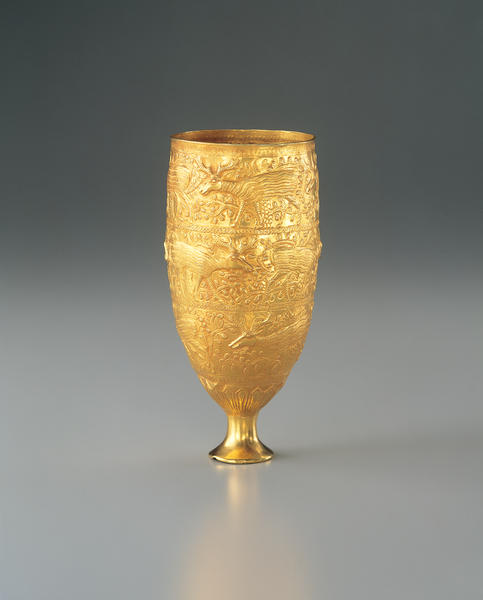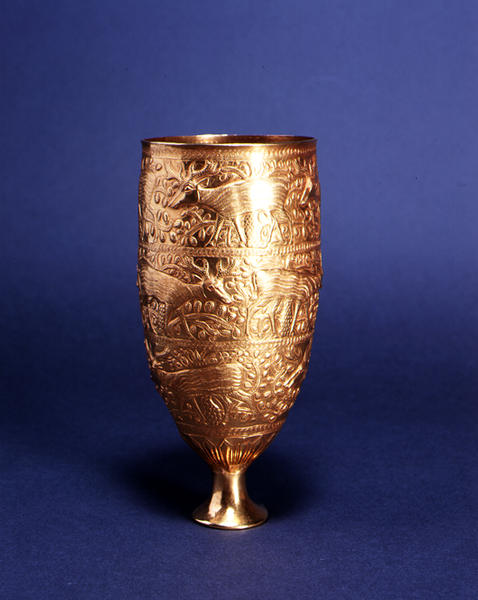Cup on Small Foot with Horned Animals and Trees
- Northwestern Iran (?)
- Early 1st millennium B.C.
- Gold
- H-14.5 D-6
Catalogue Entry
This vessel was hammered from one piece of gold to make a slender cup standing on a small foot with its mouth slightly narrowed. The cup surface is divided into four sections using five twined cord patterns called guillosh. Depicted in each of the upper three sections is a line of horned animals advancing to the right or left with trees as a background. Each animal has large branched horns with peculiar ribbon-like tips, a pointed snout and three wrinkles above the eyelid shown by large arcs. The body is covered with an almost horizontal herringbone pattern. Each background tree has a scale-like pattern on a large trunk, and a herringbone pattern for branches extending horizontally. The top of the trunk is cone-shaped. Around the branches are leaves or fruits in teardrop form with dots. The lower part of the body supported by the foot has an engraved rosette with pointed petals, and a rosette with round ends is found on the outside bottom of the foot.
These special features the horns of the animal, the face with a pointed nose, wrinkles above the eyelid, the body with horizontal herringbone pattern and the style of the trees are extremely close to features of objects excavated from the tombs of noblemen, considered to date back to the latter half of the 2nd to the early 1st millennium B.C., in the Southern Caspian Sea region of northern Iran, especially Marlik.*1 This region is said to have enjoyed prosperity through trade connecting northern as well as southern Mesopotamia and northwestern Iran at that time, and the diversity in designs for industrial arts shows that there were a variety of trades and workshops in the region. The rosette with pointed petals is a characteristic found in vessels from the 2nd millennium B.C. in the eastern region of the Black Sea.*2 A similar flower pattern is also found in metallic and ceramic ware from the early 1st millennium B.C. in northwest Iran and northern Mesopotamia.
The shape of this vessel is similar to ceramic or glass nipple-beakers without a foot, a form wide-spread in Mesopotamia, the Eastern Mediterra-nean Sea region and northwestern Iran in the early 2nd millennium B.C.*3 A glass vessel and its stand were excavated together in Marlik and are believed to have derived from Babylonia.*4

